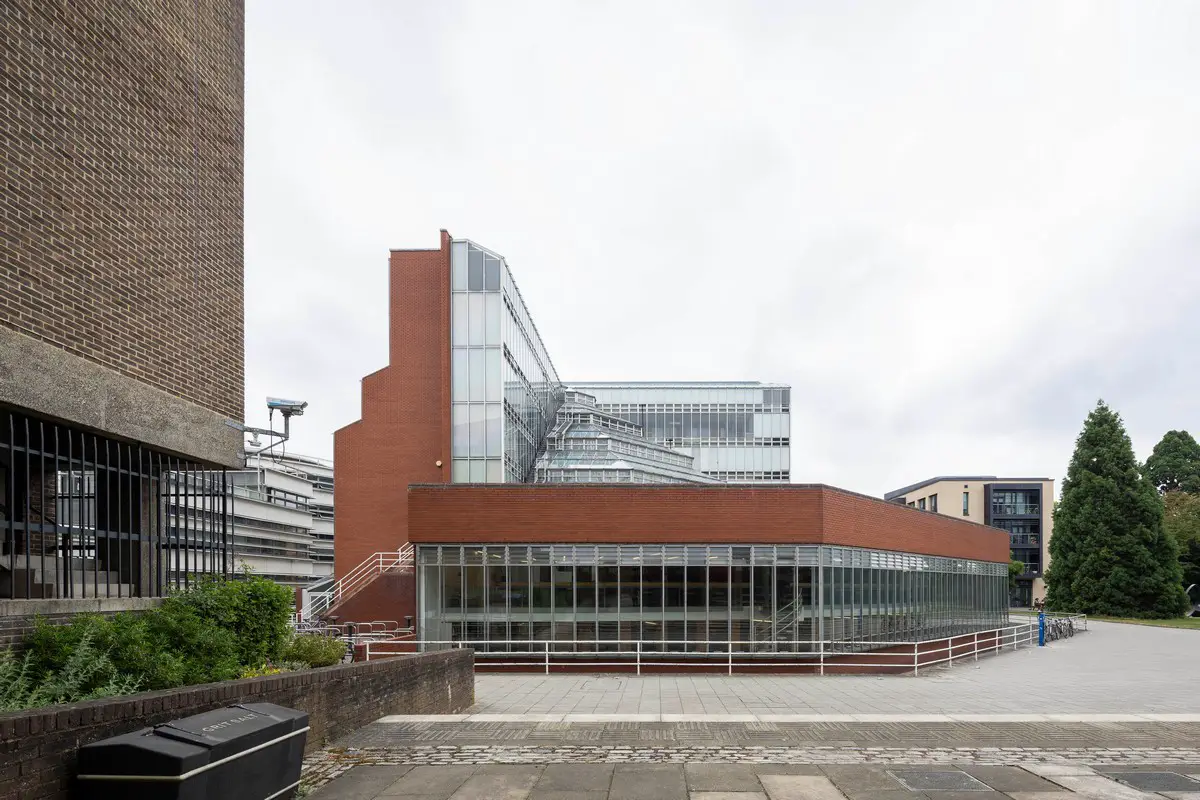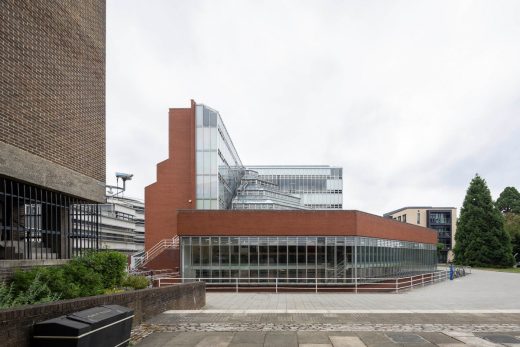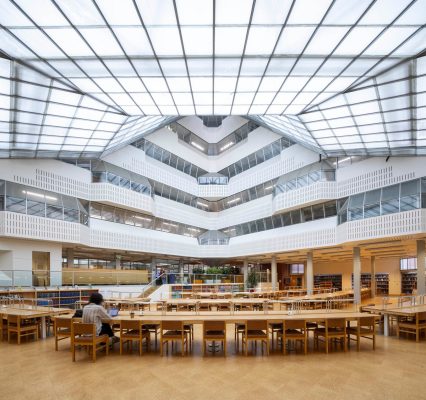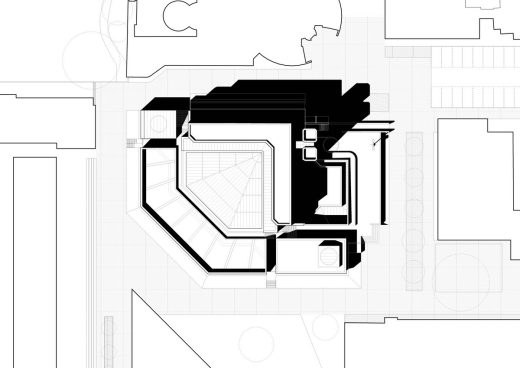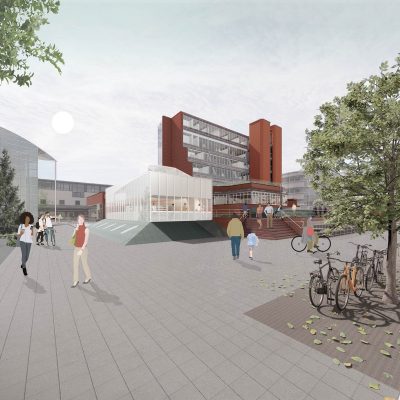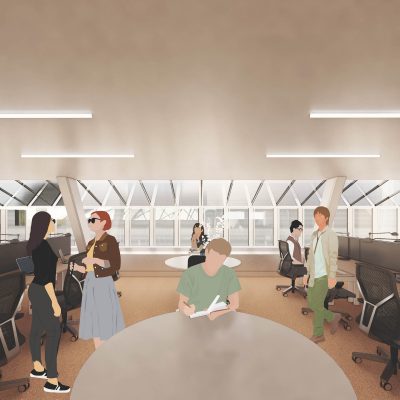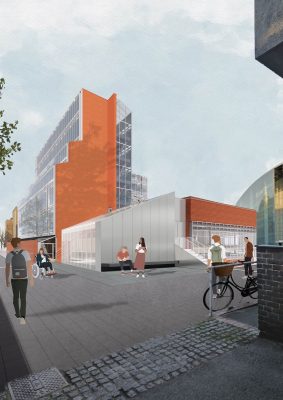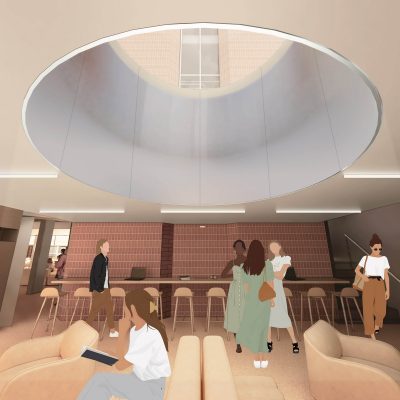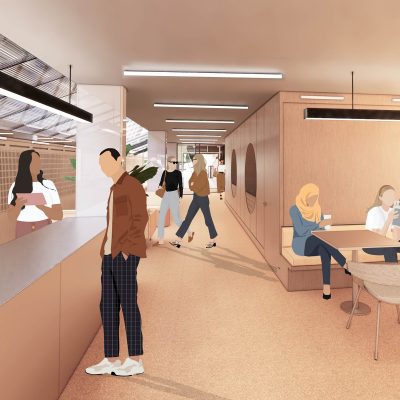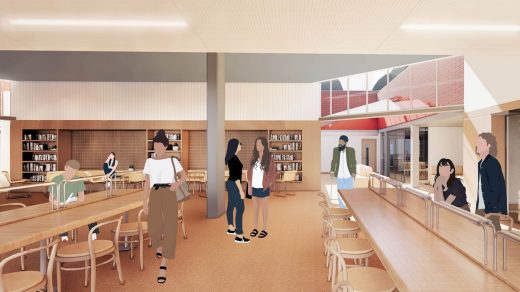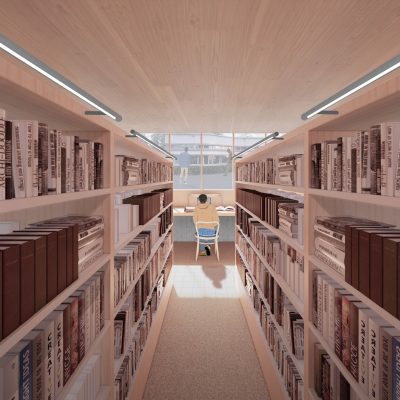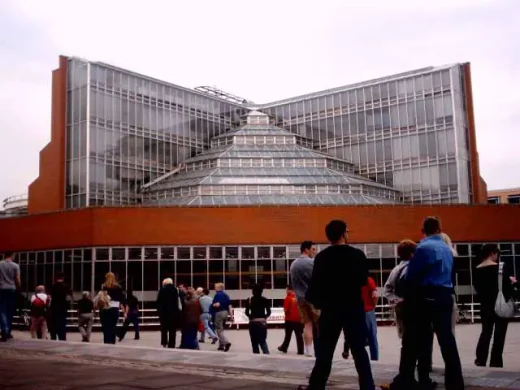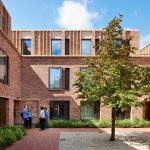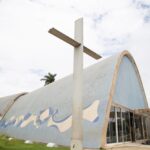Cambridge Faculty of History renewal by BDP, James Stirling building photos, British architect
Faculty of History Cambridge Architecture
BDP to restore Modern Cambridge University building design by Jim Stirling architect, England, UK
4 July 2024
University Of Cambridge Unveils Plans To Revitalise The Iconic Stirling Building
Restoration Architects: BDP
Original Architect: James Stirling
Faculty of History Building Cambridge Restoration
4th July 2024 – The University of Cambridge, working with BDP, has announced ambitious plans to restore the Grade II* listed History Faculty Building by James Stirling, which is also the home of the Seeley Library.
This landmark project will restore and revitalise one of the iconic ‘Red Trilogy’ – the triumvirate of highly significant university buildings designed in the 1960s by prominent, post-war architect, James Stirling.
It presents a once in a generation opportunity to provide a new range of enhanced learning and working environments at the heart of the University’s Sidgwick site while improving the building’s accessibility, safety and comfort and provide a new range of learning and working environments at the heart of the University’s Sidgwick site. The comprehensive refurbishment will safeguard the use and enjoyment of the building; repairing and upgrading building fabric and replacing services to improve thermal comfort, while introducing a range of carbon saving and climate resilient measures.
Professor Tim Harper, Head of the School of the Humanities and Social Sciences, said: “The project is true to James Stirling’s vision in that it looks to the future. It will enable all those who use the building to work together in new and exciting ways.”
Jessica Mailey, Architect Director at BDP, added: “We recognise that the Stirling Building is a landmark in the history and development of architecture and needs to be treated as such.”
The project has followed a meticulous conservation-led approach that embraces the value, significance and distinctive character of the building while recognising the need for change to meet contemporary requirements. After considering the multiple adaptations to the building, careful judgements have been made about the recovery and reinstatement of materials and details. In conjunction with an approach to new and repaired fabric, this project will breathe new life into the building, making its architectural value more tangible.
Mailey continues: “It has a remarkable formal inventiveness, synthesising strands of British architectural traditions with the visual culture of the early twentieth century. Stirling understood that buildings can carry a philosophical meaning: the design symbolises a community of students and teachers with knowledge, represented by the library, at its physical and symbolic heart.
“Our approach is faithful to the building diagram with the emblematic nature of the architecture as the focal point of the restored building. The work will include some adaptation to the more communal areas of the building to create flexible and inspiring spaces, responsive to the University’s ever-changing requirements, while respecting and responding to Stirling’s stylistic language.”
A key driver for the project is to meet equality, diversity and inclusion goals. Critically, the project will significantly improve step-free access throughout the building, including external terraces, to ensure equitable entry and circulation for all users. Internal treatments will also provide a more comfortable range of environments, recognising the needs of a broader spectrum of people.
Environmental sustainability is also a major focus, with innovative technologies and materials being employed to enhance the building’s performance. ‘Fabric-first’ and passive upgrades, in conjunction with renewable energy sources and efficient systems and controls, will reduce energy consumption. The project targets BREEAM Excellent certification and a zero-gas approach will be employed to help the university reach its own absolute zero targets.
Incorporation of the WELL Standard ensures wellbeing of occupants is addressed from the outset and a pre-refurbishment audit has been undertaken to identify potential reuse or recycle opportunities and minimise waste.
Extending the building also forms part of the proposals, with two new pavilions proposed to provide additional library and reading spaces while supporting improved accessibility. These new elements clearly express their function and respond to the original building scale, form and materials; deployed in a simple, abstract way to differentiate them.
Arup is delivering heritage, civil, structural, façade engineering and access services on the project to provide the technical and functional facilities befitting the building and has been engaged since the initial feasibility study in 2021.
Graham Epking-Crane, Senior Architect at Arup, commented: “The original design of Stirling’s Faculty of History building was a beautiful piece of engineering, with a visually expressed structure creating the unique volumes and distinct character that have made it synonymous with British post-war architecture. Our conservation-led approach to identify and distil the essential elements necessary to preserve its value while addressing the complex structural and technical performance requirements has been vital in understanding how the building can be sensitively yet robustly updated to secure its long-term survival.”
The landscape around the building will see improvements, aiming to enhance biodiversity and create more convivial and inviting outdoor spaces as part of the wider heritage setting.
Bedford-based SDC has been appointed as the main construction contractor for the project – the first appointment to lead a major project that has been let through the Consultants and Contractors Framework, which launched in November 2023 to provide an integrated approach to design and construction delivery for the University of Cambridge.
Dan Changer, Director at SDC, said, “We are delighted to be selected to assist the University of Cambridge’s Estates Division with the refurbishment of this architectural modernist jewel. We look forward to the inherent challenge that the project presents: balancing the requirements of heritage conservation principles with the technical resolution of challenges in the fabric design.”
The University and project team has engaged with heritage stakeholders including Cambridge City Council, the 20th Century Society and Historic England throughout the design process. Further engagement with stakeholders, including students, staff and the local community continues to be undertaken as the design progresses. A public consultation event will take place the entrance foyer of the Stirling Building, off West Road, on Tuesday 16 July, from 4-7pm for the local community to view the plans and provide feedback on the proposed restoration of this architectural landmark. Feedback received will be incorporated into future design work ahead of the planning submission targeted for late Summer 2024.
Construction is due to start from 2025, subject to university approvals, including a Grace to Regent House, and planning and listed building consent approvals from Cambridge City Council.
BDP
BDP is an international interdisciplinary practice of architects, engineers, designers and urbanists. We work closely with users, clients and the community to create special places for living, working, shopping, culture and learning across the world. Founded in 1961, we now have studios across the UK, Ireland, Netherlands, UAE, India, China, Singapore and Canada. BDP has a leading track record in all major sectors including health, education, workplace, retail, urbanism, heritage, housing, transport and leisure and has won over 1000 awards for design quality.
In March 2016, BDP combined forces with Japan’s leading engineering practice Nippon Koei to form an integrated design group of genuine international reach. Sharing a philosophy which places an emphasis on design integration and community impact, the new group offers a unique combination of deep technical skills in engineering, architecture and the full range of design disciplines. www.bdp.com
Previously on e-architect:
Dates built: 1964-68
Design: James Stirling Architect
post updated 25 Mar 2021
Faculty of History Building Cambridge
This is a controversial modern Cambridge building that had problems with overheating, leaks, falling tiles, etc. This red brick building with acres of glass features in most Histories of 20th Century architecture.
Location: Sidgwick Campus, west of the city centre, over on The Backs.
James Stirling also entered two architecture competitions in Cambridge – with no joy, at Churchill College (1958) and Selwyn College (1959).
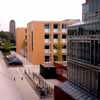
photo © Adrian Welch
Sidgwick Site, view – Stirling’s Library with Allies & Morrison building beyond
Location: Cambridge, CB3 9EF, England, UK
Cambridge Architecture
Contemporary Architecture in Cambridgeshire – architectural selection below:
Cambridge Architecture Design – chronological list
Context to the Cambridge Faculty of History
University of Cambridge – Faculty of English, Sidgwick Site
Date built: 2004
Design: Allies & Morrison
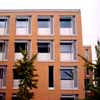
photo © Adrian Welch
Arts Faculties Campus : University of Cambridge Sidgwick Site
Dates built: 1959-61
Design: Casson, Conder & Partners

photo © Adrian Welch
Harvey Court
Date built: –
Design: Leslie Martin with Colin St John Wilson
Seminal Modern building in south east England.
Institute of Criminology Building : University of Cambridge Sidgwick Site
Date built: 2005
Design: Allies & Morrison
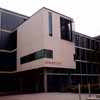
photo © Adrian Welch
Cambridge University Law Library, Sidgwick Campus
Date built: –
Design: Foster & Partners
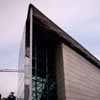
photo © Adrian Welch
Robinson College
Date built: 1980
Design: Gillespie Kidd & Coia, Glasgow
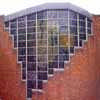
photo © AW
Faculty of Divinity Building, University of Cambridge – Sidgwick Site
Date built: 2000
Design: Edward Cullinan Architects
Another major British building design by James Stirling is the St Andrews University Halls of Residence, featured on the Edinburgh Architecture site.
Comments / photos for the Cambridge History Faculty Architecture design by British architect Jim Stirling page welcome.

